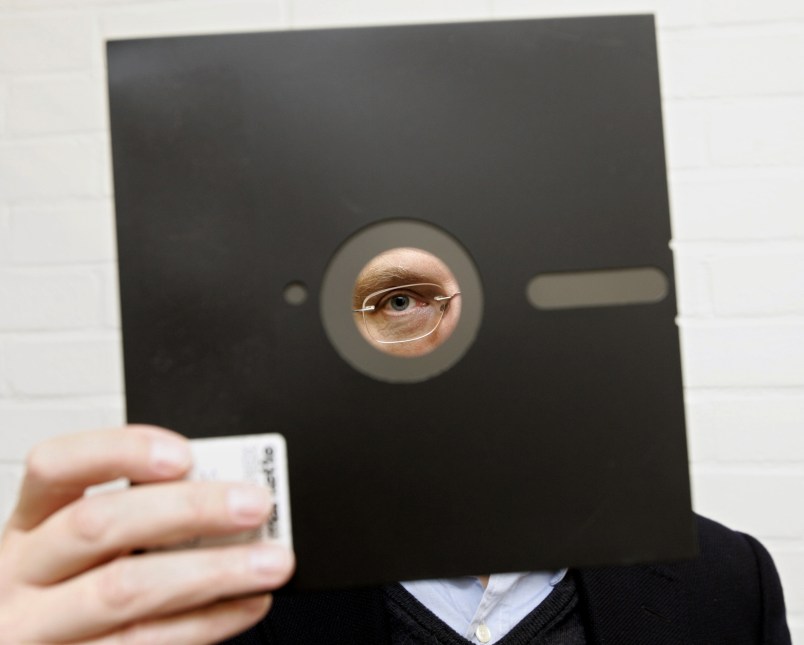WASHINGTON (AP) — The government is spending about three-fourths of its technology budget maintaining aging computer systems, including platforms more than 50 years old in vital areas from nuclear weapons to Social Security. One still uses floppy disks.
In a report to be released Wednesday, nonpartisan congressional investigators say the increasing cost of maintaining museum-ready equipment devours money better spent on modernization.
Despite a White House push to replace aging workhorse systems, the budget for modernization has fallen, and will be $7 billion less in 2017 than in 2010, said the Government Accountability Office. The report was provided to The Associated Press ahead of a House oversight committee hearing.
GAO said it found problems across the government, not just in a few agencies. Among those highlighted in the report:
— The Defense Department’s Strategic Automated Command and Control System, which is used to send and receive emergency action messages to U.S. nuclear forces. The system is running on a 1970s IBM computing platform, and still uses 8-inch floppy disks to store data. “Replacement parts for the system are difficult to find because they are now obsolete,” GAO said. The Pentagon is initiating a full replacement and says the floppy disks should be gone by the end of next year. The entire upgrade will take longer.
— Treasury’s individual and business master files, the authoritative data sources for taxpayer information. The systems are about 56 years old, and use an outdated computer language that is difficult to write and maintain. Treasury plans to replace the systems, but has no firm dates.
— Social Security systems that are used to determine eligibility and estimate benefits, about 31 years old. Some use a programming language called COBOL, dating to the late 1950s and early 1960s. “Most of the employees who developed these systems are ready to retire and the agency will lose their collective knowledge,” the report said. “Training new employees to maintain the older systems takes a lot of time.” Social Security has no plans to replace the entire system, but is eliminating and upgrading older and costlier components. It is also rehiring retirees who know the technology.
— Medicare’s Appeals System, which is only 11 years old, but facing challenges keeping up with a growing number of appeals, as well as questions from congressional offices following up on constituent concerns. The report says the agency has general plans to keep updating the system, depending on the availability of funds.
— The Transportation Department’s Hazardous Materials Information System, used to track incidents and keep information relied on by regulators. The system is about 41 years old, and some of its software is no longer supported by vendors, which can create security risks. The department plans to complete its modernization program in 2018.
GAO estimates that the government spent at least $80 billion on information technology, or IT, in 2015. However, the total could be significantly higher. Not counted in the report are certain Pentagon systems, as well as those run by independent agencies, among them the CIA. Major systems are known as “IT investments” in government jargon.
“Legacy federal IT investments are becoming obsolete,” GAO concluded. “The federal government runs the risk of continuing to maintain investments that have outlived their effectiveness and are consuming resources that outweigh their benefits.”
The report also profiled aging systems operated by the departments of Agriculture, Commerce, Energy, Homeland Security, Justice, State, and Veterans Affairs.
The White House has been nudging agencies to identify obsolete systems and start replacing them, but GAO said that clearer, more specific goals and timetables are needed. A starting point could be recent legislation supported by the White House to create a revolving fund of $3 billion for replacing or upgrading older technology. It seems certain that President Barack Obama’s successor will have to grapple with the issue.
“The federal government is years and in some cases decades behind the private sector,” Rep. Jason Chaffetz, R-Utah, chairman of the House Oversight and Government Reform Committee, said in a statement. “Taxpayers deserve a government that leverages technology to serve them, rather than one that deploys insecure, decades-old technology that places their sensitive and personal information at risk.”
Copyright 2016 The Associated Press. All rights reserved. This material may not be published, broadcast, rewritten or redistributed.







8" floppy disks. (((Reaches for the antiacids))) Does anyone find that as horrific as I do? Good to know that the floppy disks with be gone at the end of next year.
They’ll probably be replacing them with 3 1/2" not-so-floppy disks.
All part of breaking gov’t to “prove” it’s broken.
Who in blazes even still makes 8" disks? I haven’t even seen a 5.25" in at least 15 years.
People laughed at me when I bought seventeen pallets of them in 1988. Well now who’s laughing, huh? I still know a few people at STRATCOM…time for my big play.
The government would be happy to purchase those from you. Is $1B enough?